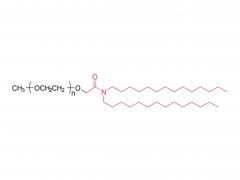Research Article | Issue | Published: 06 December 2016
Safety profile of two-dimensional Pd nanosheets for photothermal therapy and photoacoustic imaging
Mei Chen1,§, Shuzhen Chen2,3,§, Chengyong He2,§, Shiguang Mo1, Xiaoyong Wang2, Gang Liu2, Nanfeng Zheng1
Abstract
Two-dimensional (2D) nanosheets have emerged as an important class of nanomaterial with great potential in the field of biomedicines, particularly in cancer theranostics. However, owing to the lack of effective methods that synthesize uniform 2D nanomaterials with controlled size, systematic evaluation of size-dependent bio-behaviors of 2D nanomaterials is rarely reported. To the best of our knowledge, we are the first to report a systematic evaluation of the influence of size of 2D nanomaterials on their bio-behaviors. 2D Pd nanosheets with diameters ranging from 5 to 80 nm were synthesized and tested in cell and animal models to assess their size-dependent bioapplication, biodistribution, elimination, toxicity, and genomic gene expression profiles. Our results showed size significantly influences the biological behaviors of Pd nanosheets, including their photothermal and photoacoustic effects, pharmacokinetics, and toxicity. Compared to larger-sized Pd nanosheets, smaller-sized Pd nanosheets exhibited more advanced photoacoustic imaging and photothermal effects upon ultralow laser irradiation. Moreover, in vivo results indicated that 5-nm Pd nanosheets escape from the reticuloendothelial system with a longer blood half-life and can be cleared by renal excretion, while Pd nanosheets with larger sizes mainly accumulate in the liver and spleen. The 30-nm Pd nanosheets exhibited the highest tumor accumulation. Although Pd nanosheets did not cause any appreciable toxicity at the cellular level, we observed slight lipid accumulation in the liver and inflammation in the spleen. Genomic gene expression analysis showed that 80-nm Pd nanosheets interacted with more cellular components and affected more biological processes in the liver, as compared to 5-nm Pd nanosheets. We believe this work will provide valuable information and insights into the clinical application of 2D Pd nanosheets as nanomedicines.
Related products
Abbreviation: mPEG-SH
Name: Methoxypoly(ethylene glycol) thiol
For more product information, please contact us at:
US Tel: 1-844-782-5734
US Tel: 1-844-QUAL-PEG
CHN Tel: 400-918-9898
Email: sales@sinopeg.com





















